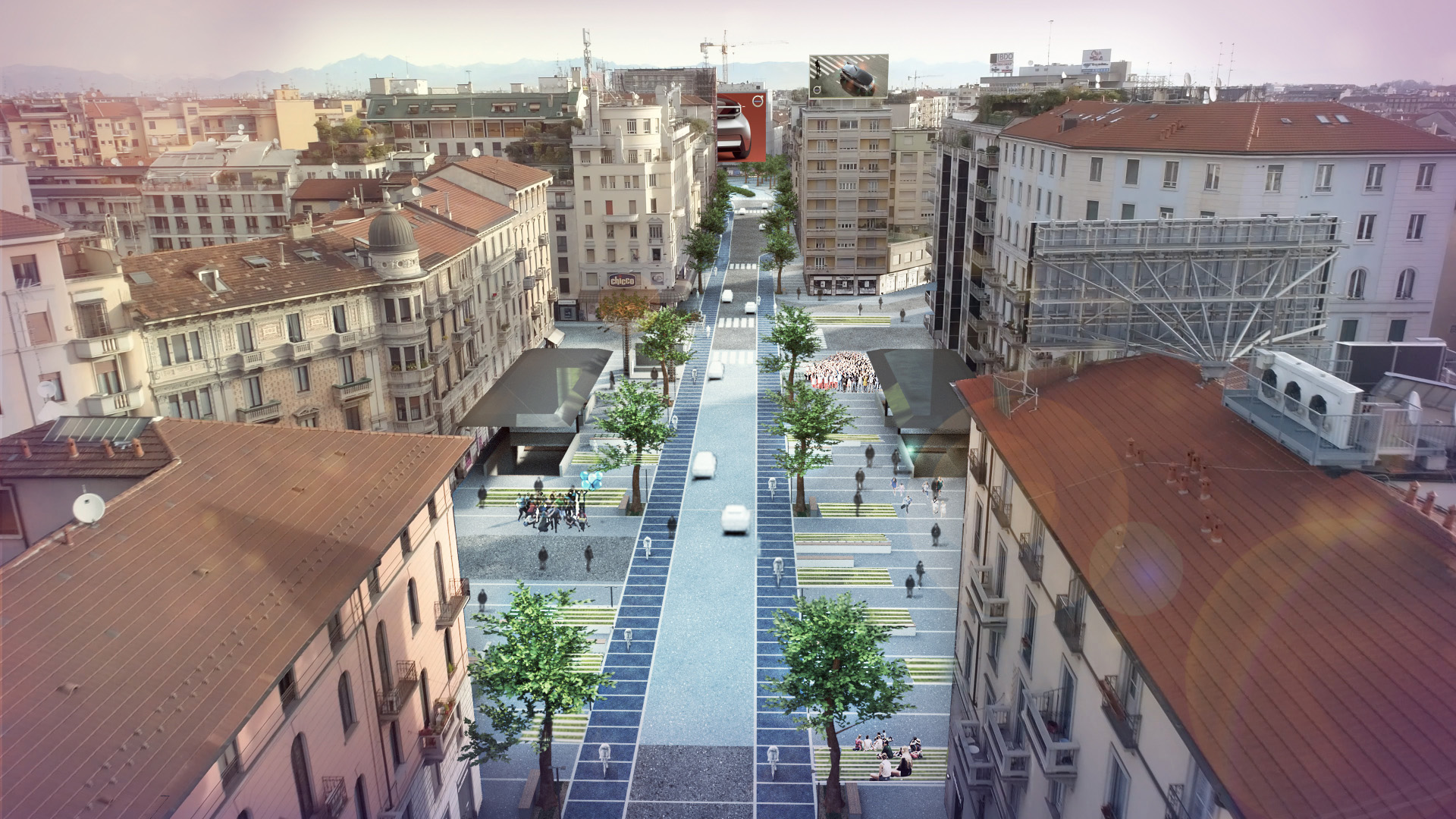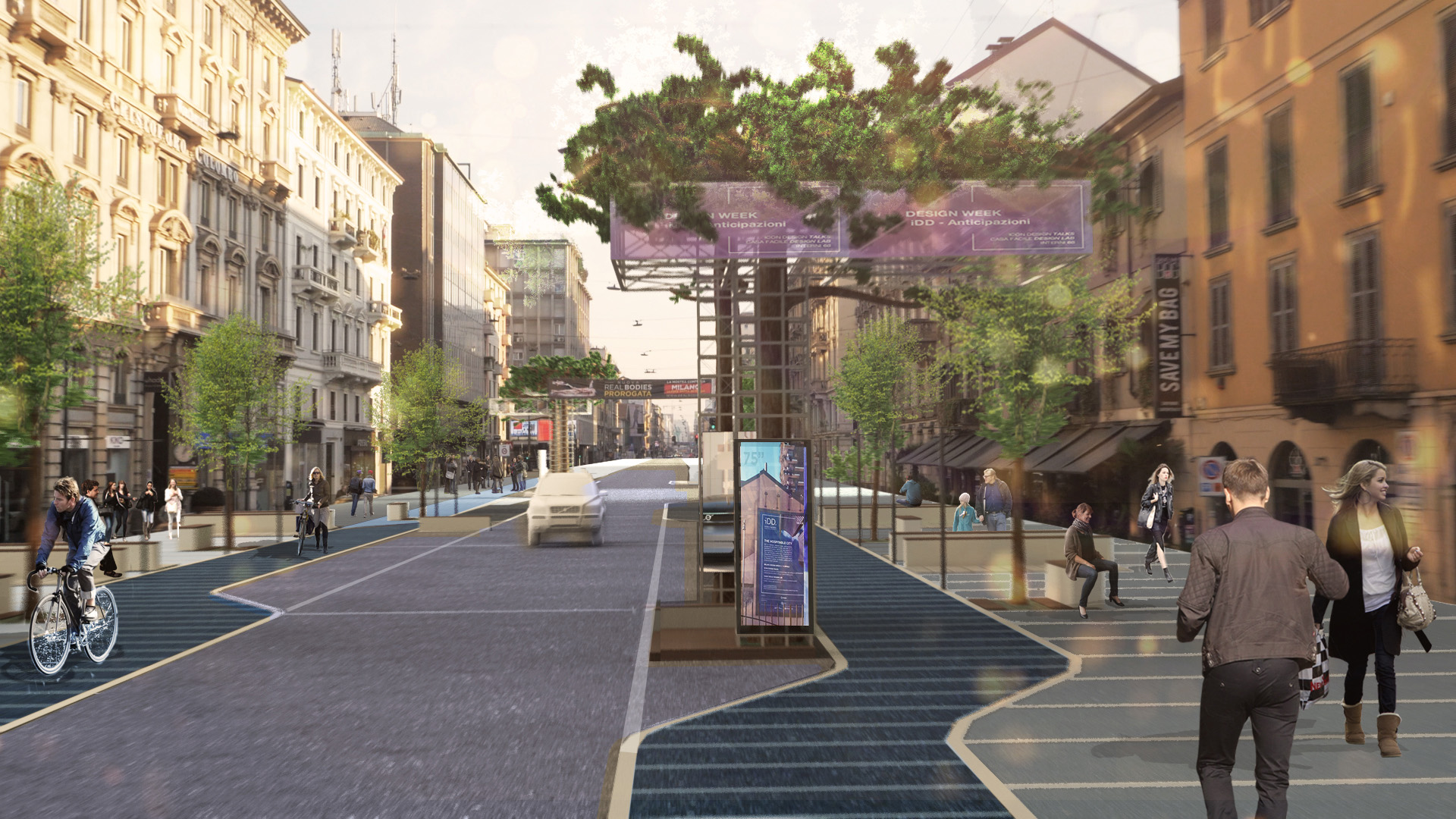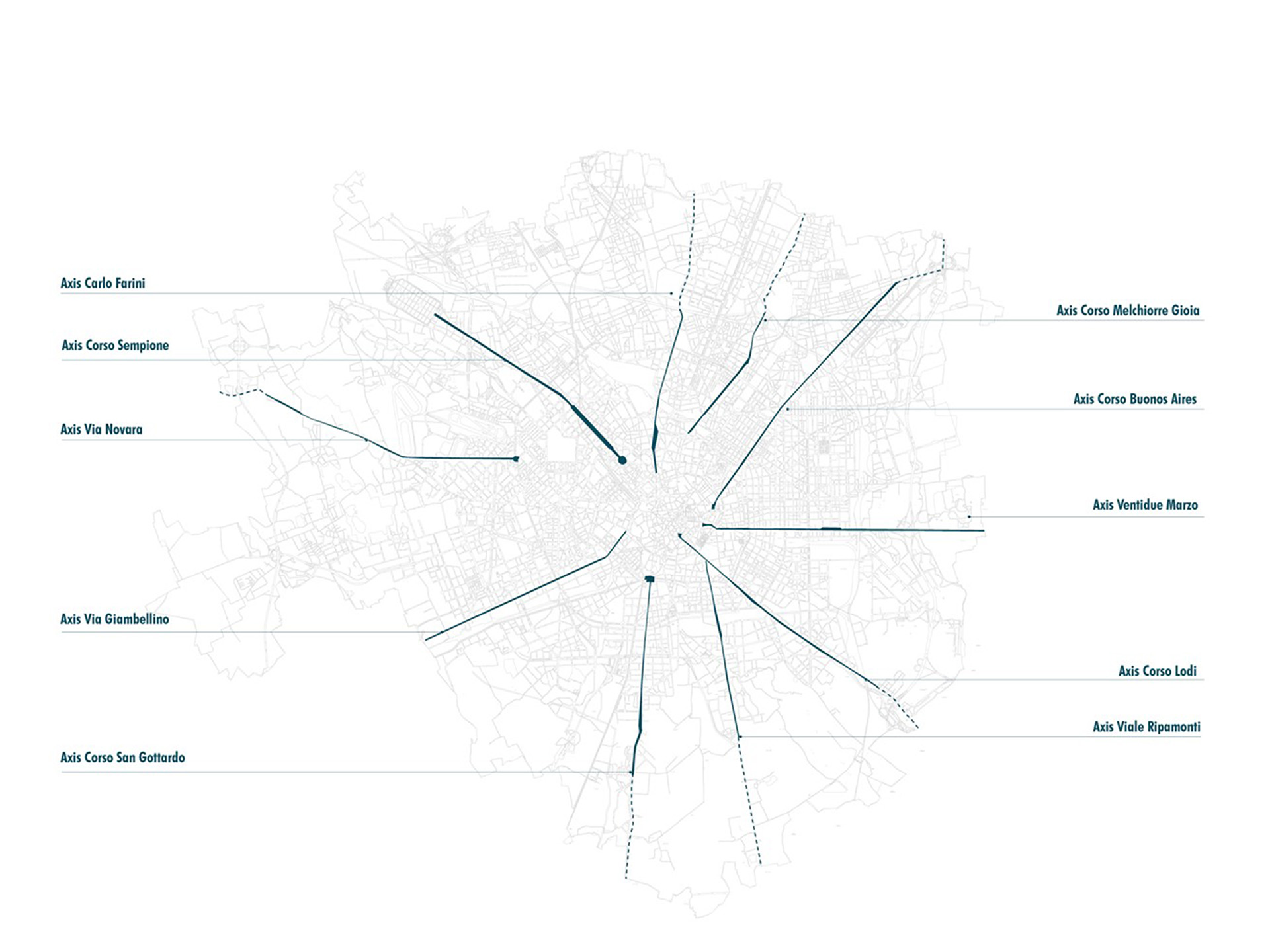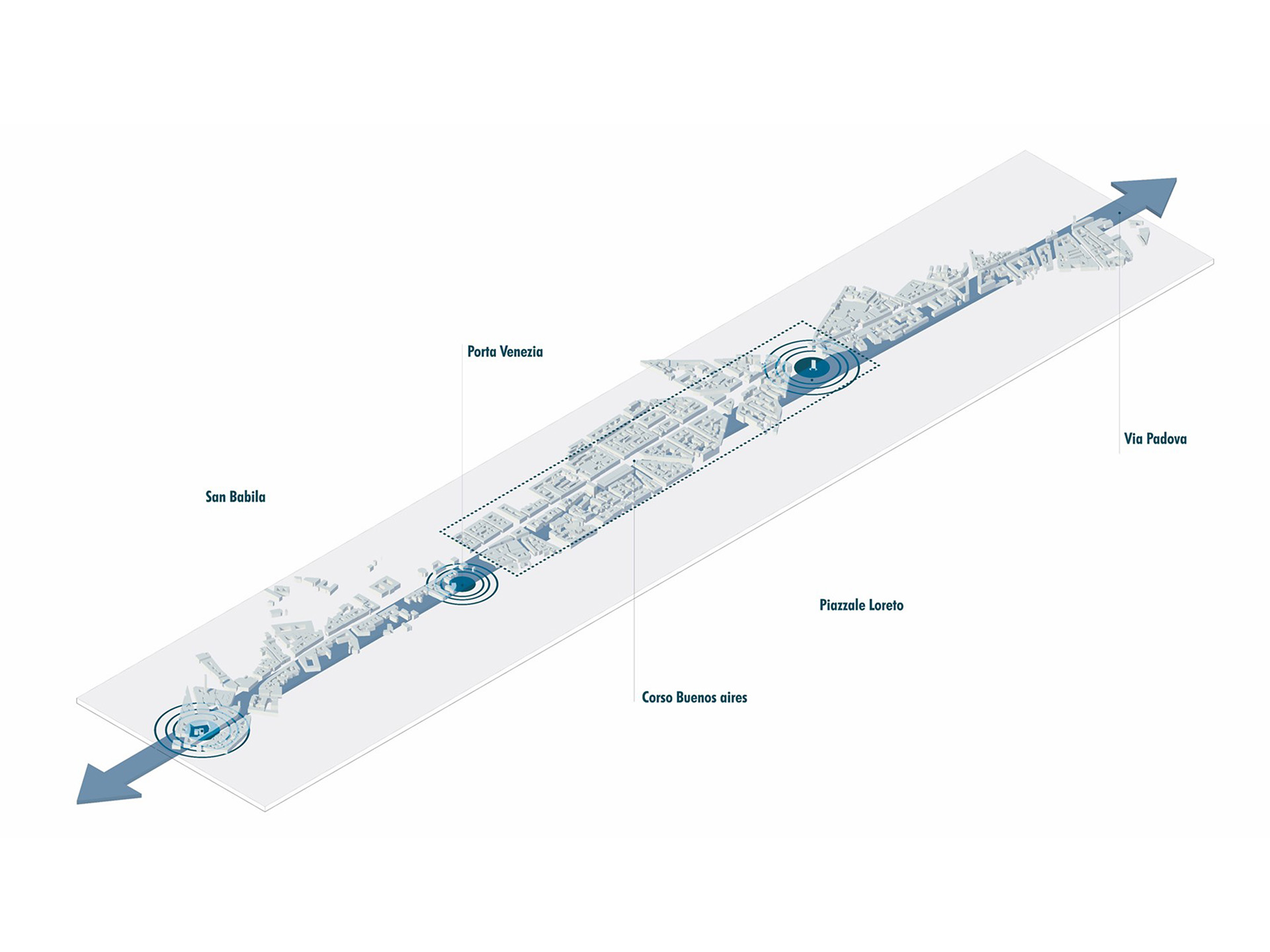Milano Future City
Milan
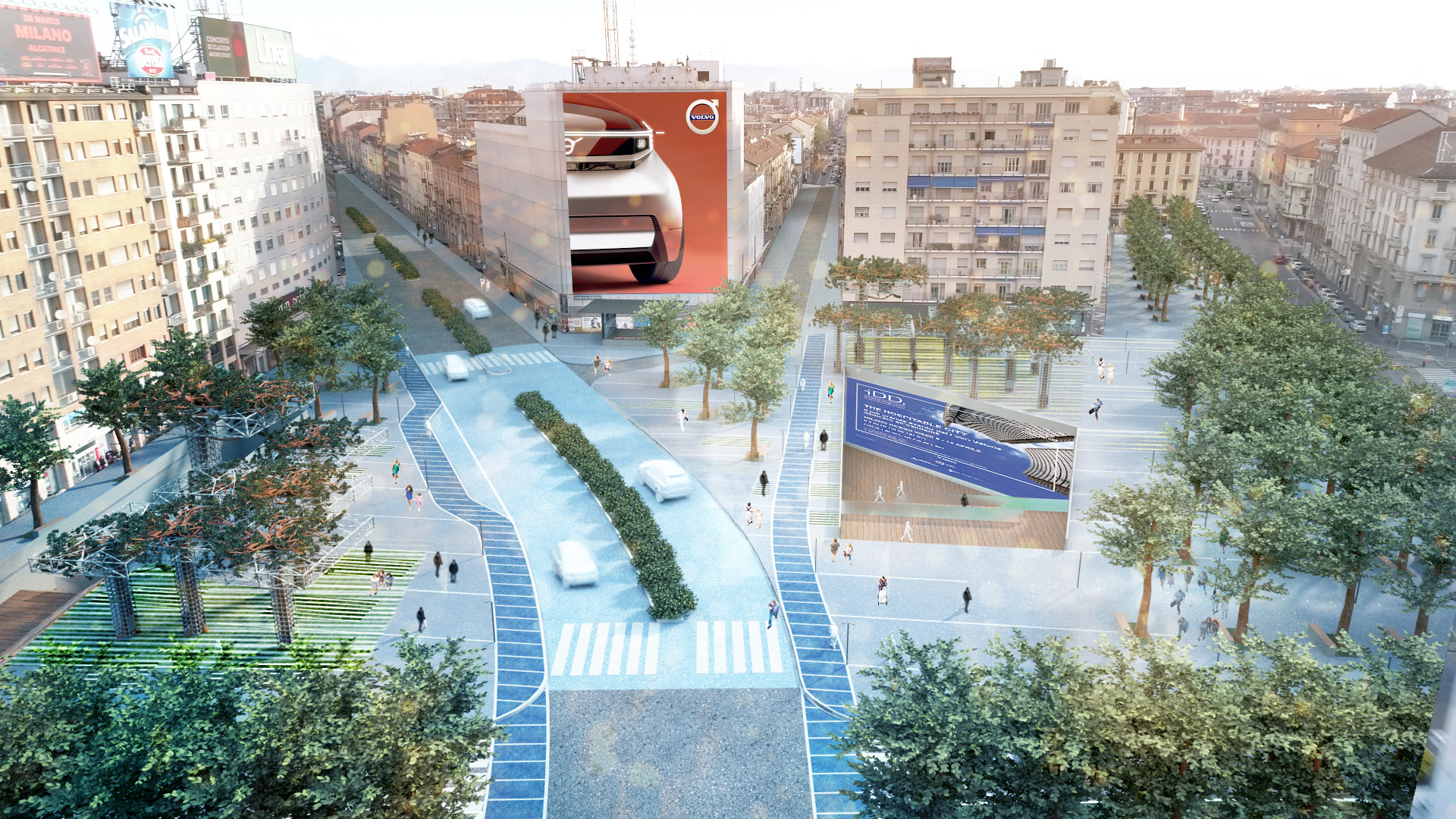
Milano Future City is an idea by Metrogramma and MIC-HUB with Volvo Car Italia as main partner – the initiative promoted by Mondadori magazine Icon Design - envisages the redefinition of ten key major roads in the city that today are designed with only cars in mind and that have the potential to be re-thought as multimodal corridors.
The first pilot project envisages the reconfigurations of the axis "Corso Venezia - Buenos Aires - Via Padova", a segment of approximately 6 km going from the city centre to the periphery and crossing different neighbourhoods with their own potentials and criticalities. The project is based on a road space redistribution strategy as well as on the deployment of new technologies, with the target of turning the road into a connector with a recognizable identity rather than a sequence of stretches interrupted by big traffic junctions.
Particularly along Corso Buenos Aires the road space is distributed inefficiently, lanes are very large, sidewalks are extremely narrow for a shopping street and no bike lanes are provided. The new design proposes to reduce the carriageway to one car lane per direction consequently preventing irregular parking that often occupies the two external lanes, making them unusable.
Location
Milan
Client
Milano Future City
Main expertise
New technologies
PROJECT HIGHLIGHTS
- Intervention length 6 km
- Population reached in 500m ~ 49,000
- Workers reached in 500m ~16,500
Project gallery
Our contribution
Besides enlarging the narrow sidewalks, the newly gained space will be converted into a smart lane that will host electric vehicles as well as the new family of mobility devices that are increasingly populating our cities and that aren’t provided with adequate space yet.
The nodes along the axis, such as Piazza Oberdan and Piazzale Loreto, today are just traffic junctions designed for cars and extremely hostile to pedestrians and other soft modes. The project looks at the possibility of reviving the public realm by reorganizing these areas, finding new spaces for pedestrians and reducing car space to what is strictly needed, getting rid of road elements typical of an old car-centric approach.
The initiative was supported by Volvo, the Swedish brand that focuses since more the 2 decades on rebalancing the presence of cars and people in cities.
